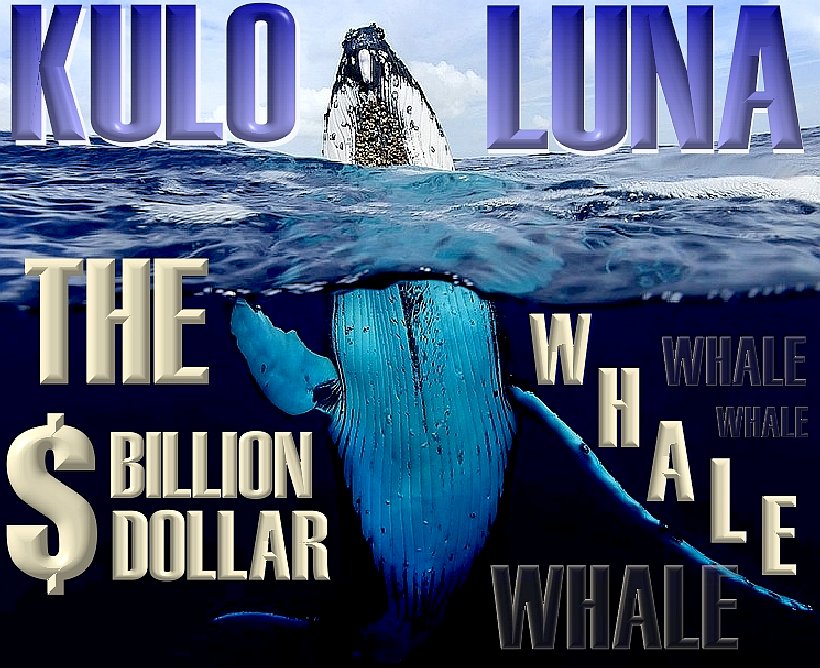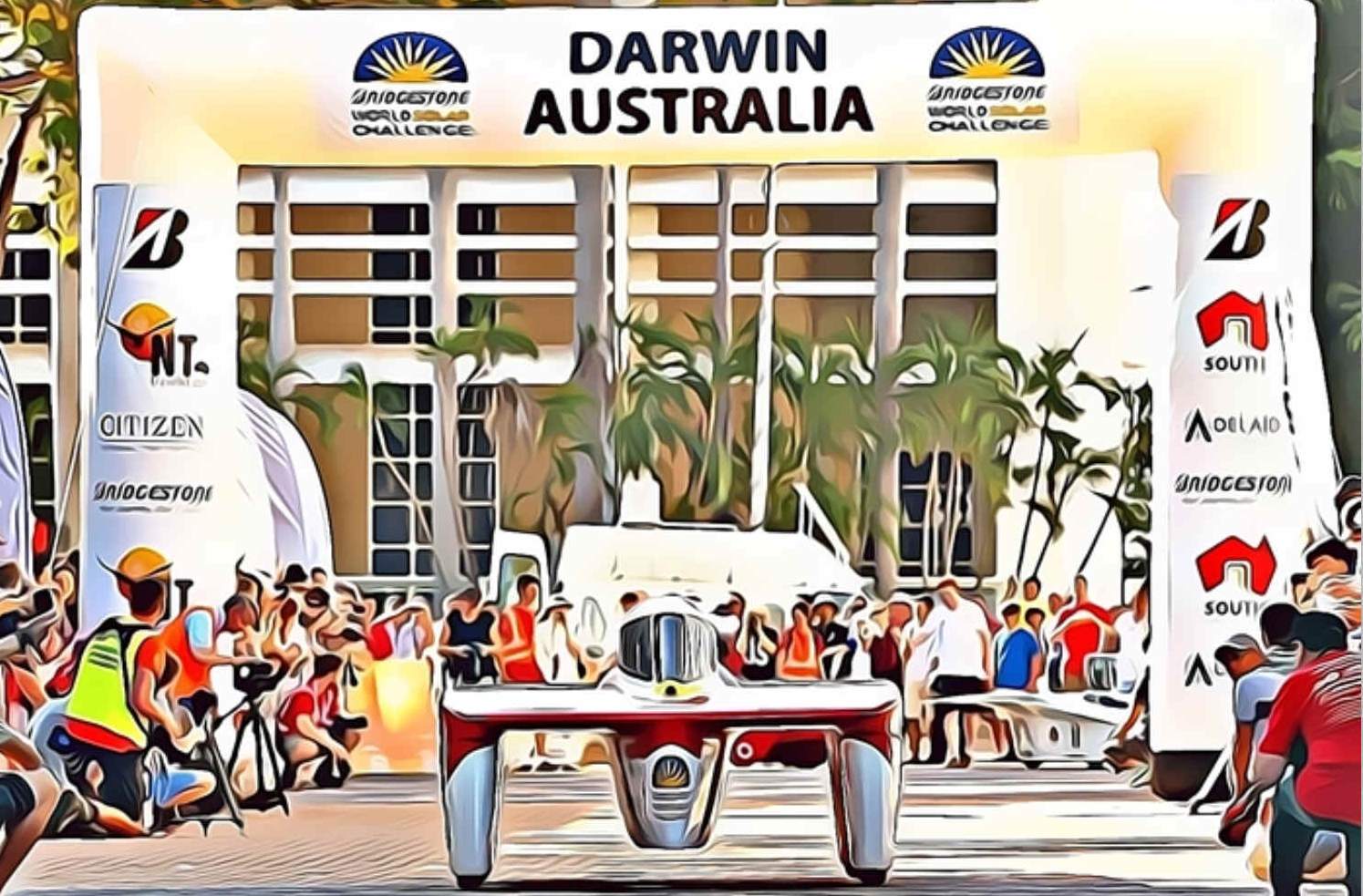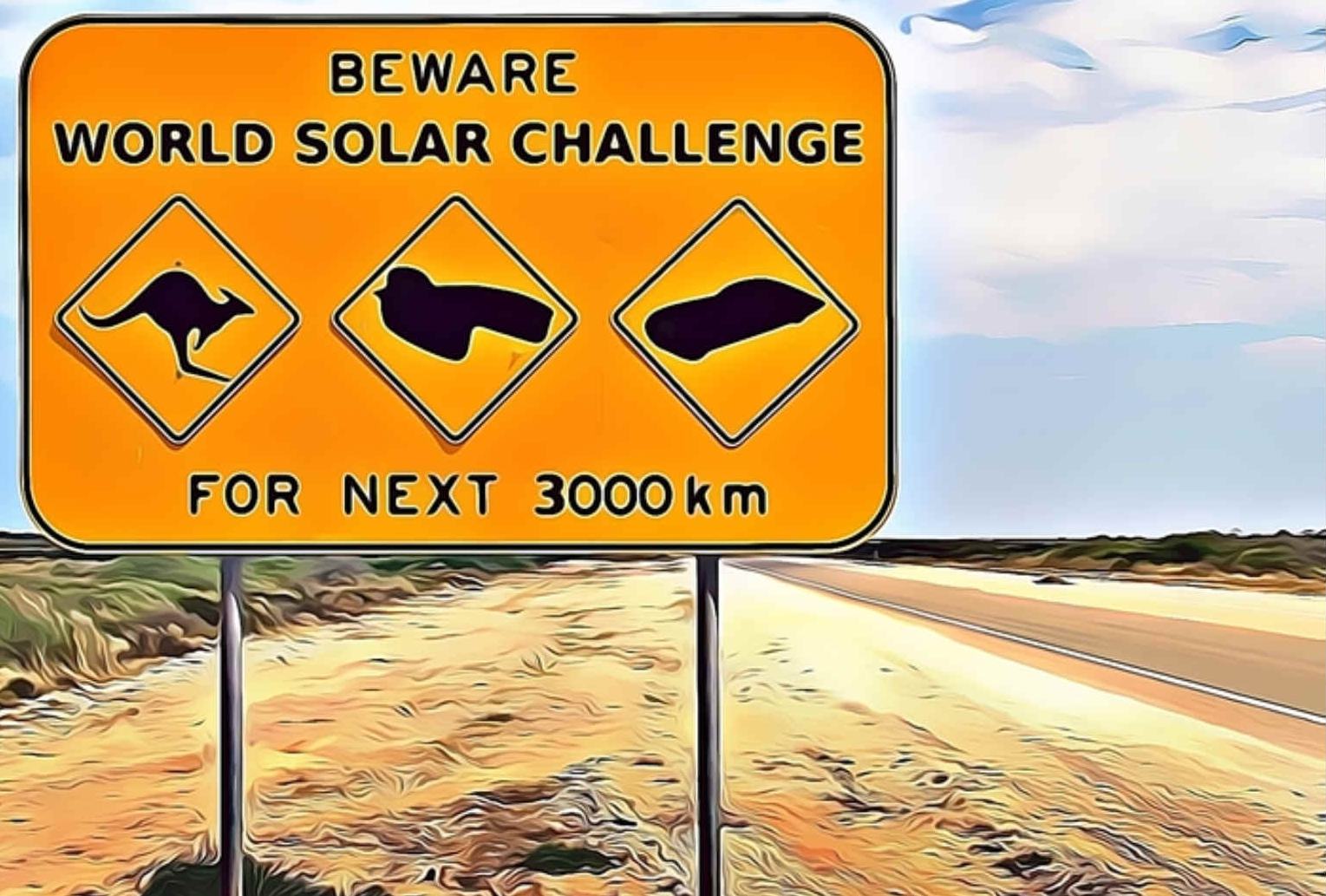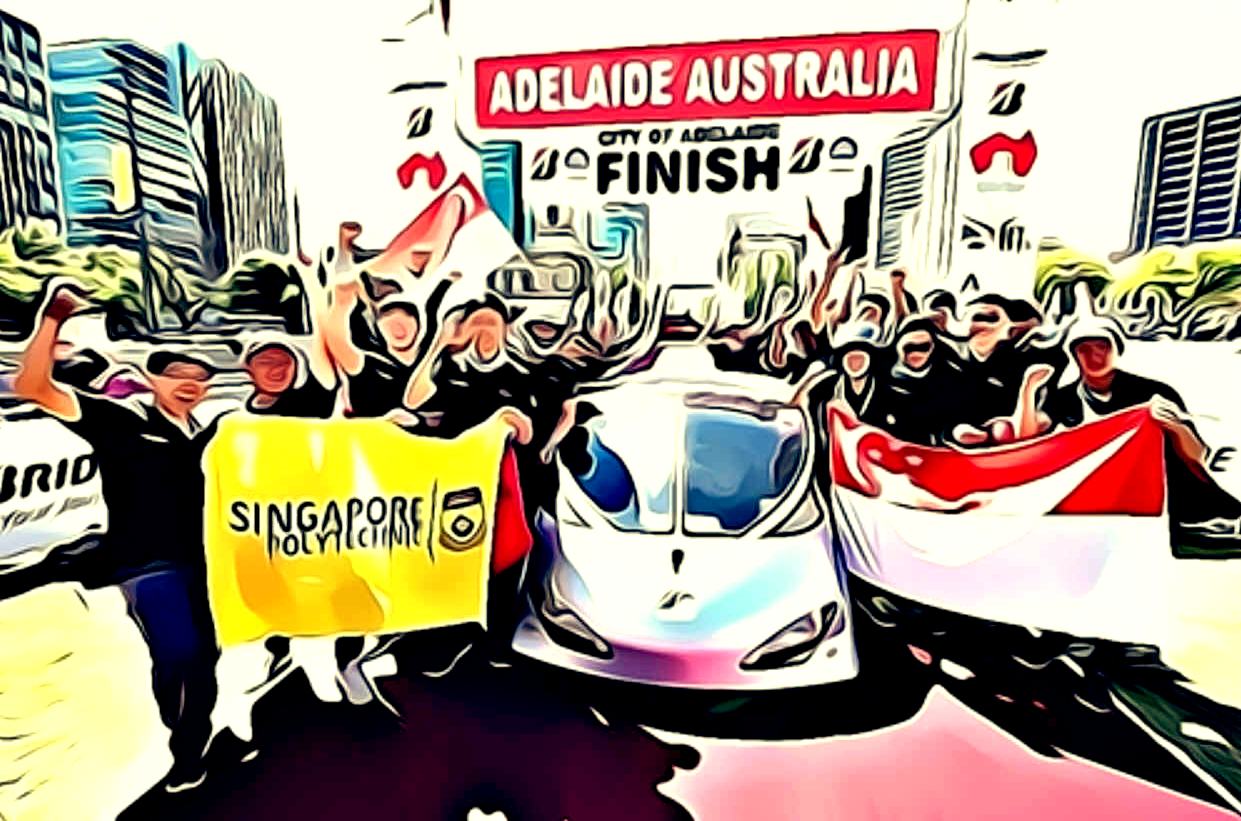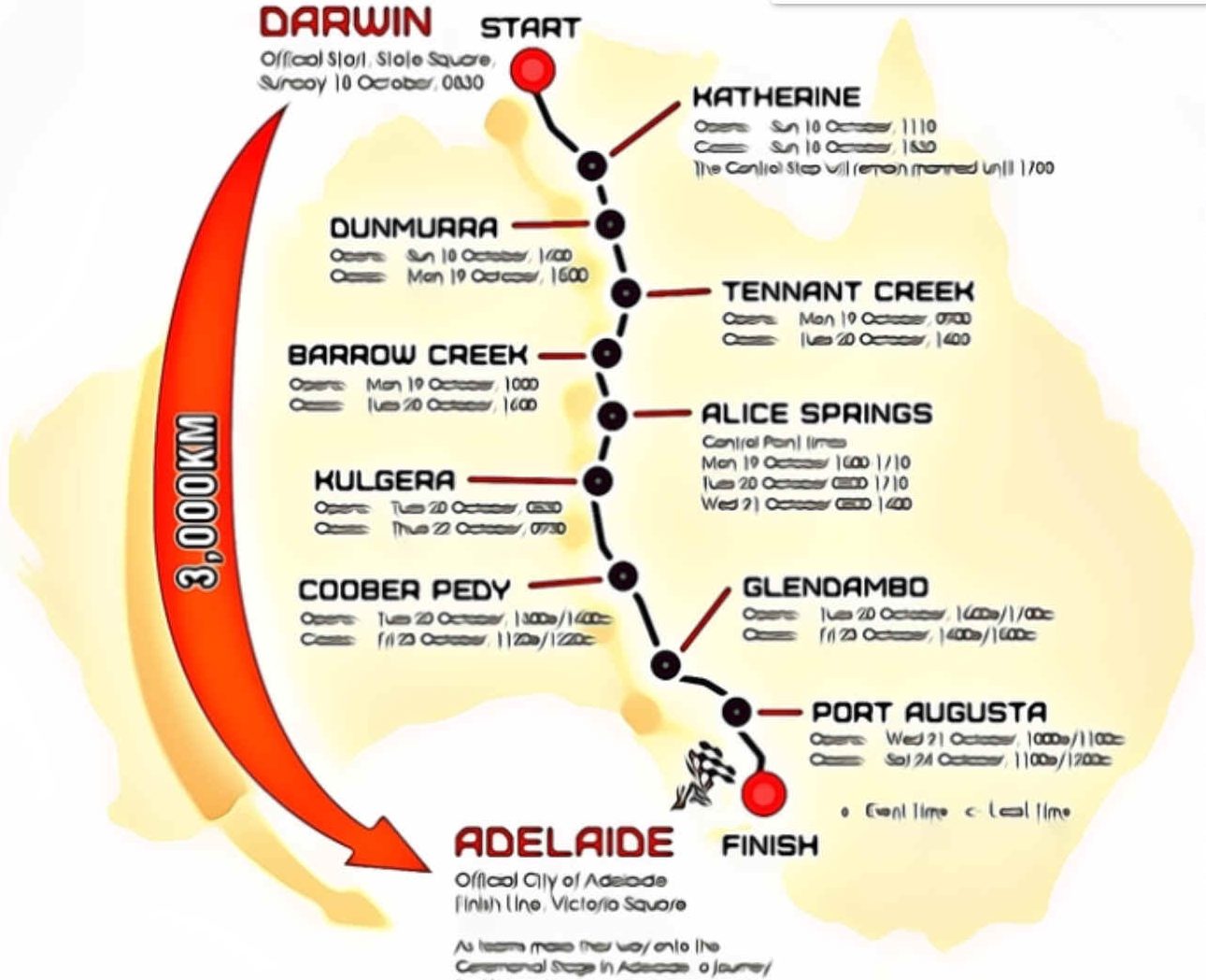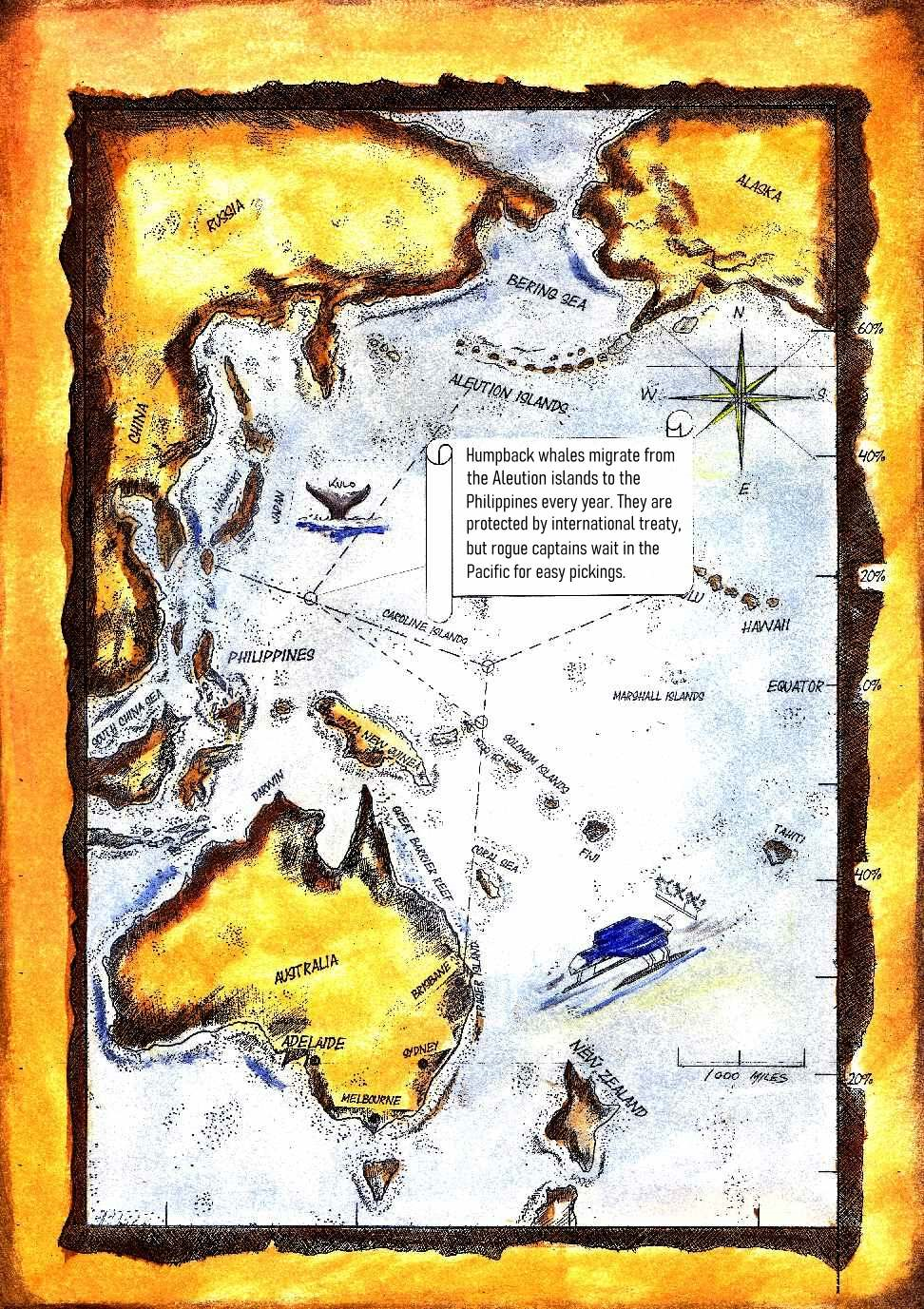|
DARWIN to ADELAIDE - WSC
Please use our A-Z INDEX to navigate this site, or flipper HOME
|
||||||||||||||||||||||||||||||||||||||||||||||||||||||||||||||||||||||||||||||||||||||||||||||||||||||||||||||||||||||||||||||||||||||||||||||||||||||||
The adventures of John Storm and the Elizabeth Swann. John Storm is an ocean adventurer and conservationist. The Elizabeth Swann is a fast solar powered boat. During a race around the world, news of the sinking of a pirate whaling ship reaches John Storm and his mate Dan Hook. They decide to abandon the race and try and save the whale.
(Original Chapter 14) – Darwin to Adelaide - 130 S, 1310 E – 350 S, 1380 E (WSC)
SIX PACK <<<
Steve Green and Charley Temple surveyed the podium and the end points of the start line being built for the forthcoming electric car race across the belly of Australia, from Darwin along the Stuart Highway, some 3,000 miles, ending in the state capital of South Australia; Adelaide.
The port of Darwin is the state capital of the Northern Territory, founded in 1860 as Palmerston and re-named after Charles Darwin the renowned English naturalist; Port Darwin in 1911. This sparsely populated city is home to the famous World Solar Challenge or WSC. The race is for electric cars, but only those that are solar powered.
“I wonder if this event will be the same again after the solar boat race?”
Charley frowned. “Just a little confusing I’d say - boss."
"The World Solar Navigation Challenge would have been a more accurate description of the boating event – the WSNC. A bunch of boats are literally going to race around the World.” She continued, “The WSC is a bunch of cars driving 3,000 miles across Australia’s belly. The only reason ‘World’ is in the title, is because entrants come from all over the world.”
Steve jumped in, “But then, there are other long distance land events with entrants from all over the world.”
“True Blue,” said Charley with an Aussie twang. It was not often she was so opinionated. Steve smiled, secretly impressed.
"In fact they renamed the world navigation event to be even more precise, to avoid that kind of confusion. It is now known as the World Zero Carbon Challenge or WZCC."
"Why is that," asked Charley.
"Because some of the boats are solar and wind powered, and the 'World Solar and Wind Navigation Challenge' is a bit of a mouthful."
"Isn't wind power just sailing?"
"It would be if they used sails. They are using turbines as rotary sails to generate electricity," explained Steve.
"WZCC sounds better anyway if you ask me," said Charley.
The reporters climbed into a dusty black SUV and headed for the Mayor’s offices in City Hall.
“Did you know solar racing began as a sport in the 1980’s with this race for cars across the Stuart Highway, through: Katherine, Tennant Creek, Alice Springs, Woomera and Port Pirie, ending in Adelaide. Contestants battled sand storms, brushwood, road trains (those large Australian trucks pulling several trailers) and each other across miles of unmade desert roads.”
“Yuh” replied Charley, "we’re here.” They climbed out of the SUV and looked at the buildings façade.
“Not
as grand as Melbourne, but charming in its own way.” They entered the
reception hall to see a historic picture display of the event that had
made Darwin internationally famous.
So
too the intrepid Frenchman, Louis Bleriot had crossed the Channel in
1909 from Dover to Calais in 37 minutes, then came Charles Lindbergh,
with his Atlantic crossing in Spirit of St Louis from New York to Paris
in 1927 which flight took 33 hours and 30 minutes. This crossing fired
the imagination of air operators, eventually leading to Panam, BA,
Quantas and other air operators offering scheduled flights to shrink the
globe. But at a price. Air Miles became Carbon Miles in reality, that
would speed up global
warming, as holiday makers basked in the sunshine destinations, they
were helping to make hotter, by going there. Irony at its best.
Solar
powered river boats
sprang up all over the world beginning in Switzerland and spreading
across Europe to the Mediterranean,
London’s River
Thames, Scotland’s Loch Ness, then to exotic holiday locations in the Caribbean, Australia and Canada. Most of these slow moving craft
were little more than ordinary boats with parasols covered in solar
panels. Crude and underpowered, but suitable for rivers and lakes.
"Climate change could have been nudged into top gear if motor manufacturers had been politically incentivised earlier in the day."
"One memorable vehicle represented a missed opportunity for mankind in 1996 – with instant electric refueling for a 250 mpg hybrid. The concept was pooh, poohed by US and British civil servants in favour of hydrogen, but then later in 2018, the same British and US think tanks were almost begging for the same solution, as battery electric cars took to the streets in greater numbers. But still with no support infrastructure, other than plug in charging."
“We
take for granted our cars and trucks, but can you imagine a world
without high speed convenience transport. The pioneering spirit of
thousands of exceptionally gifted engineers developed the motor car to
its present state, but the five pioneering inventors of modern
transport, nearly all lived in Germany. We are standing on the shoulders
of determined, hands-on intellectual giants, beginning with Nikolaus
August Otto a German engineer who built the first practical gas engine
which he displayed at the 1867 Paris Exhibition. He later built a
four-stroke, spark ignition internal
combustion engine which is where the ‘Otto
Cycle’ comes from. Like many great inventions ahead of their time, it
was to be another sixteen years before the next major step.”
“In
1883 Gottlieb Daimler and Wilhelm Maybach built an IC powered
motorcycle, then in 1890 founded Daimler Motor
Co which built Mercedes cars.
Karl Benz was the first engineer to sell four wheel, four stroke powered
vehicles to a standardised pattern in 1885. Then in 1897 German engineer
Rudolf Diesel built
the first compression ignition four stroke engine. Henry Ford came along
in 1908 with his famous Model T, followed by the all important
mass-production line in 1913 which revolutionised car production for the
masses. The production line was just as important, as the invention of the motor car.”
"And then we come to the solar cell. NASA, the National Aeronautics and Space Administration, developed the silicon based solar cell to power satellites in the 1950s and 1960s. Satellites needed constant onboard power for inertial stability, to maintain geostationary orbit and radio transmissions."
"At the same time the silicon transistor miniaturisation was born for use in modern computers, which first navigated Apollo Moon missions there and back. The Human race had come a long way since the Italian physicist Alessandro Volta invented his famous Pile, a battery to generate a small electric current. It was a British mathematician named Charles Babbage who originated the concept of mechanical calculations, with the construction of his vault size calculating machine. He died in 1871, after the government refused financial support to complete the work."
John was actually reciting from the work of his uncle, Professor Douglas Storm, a man who had inspired Israel, China and California to manufacture cars that could swap battery packs to recharge instantly. And now Mr Storm was about to enter the inaugural race around the world for zero emission vessels. This was what interested Steve Green, where the International Maritime Organization was on the lookout for solutions to give the world zero carbon ships before 2050.
Solar powered cars for ordinary transport had not taken off. Would it be the same for solar and wind powered ships?
The only way to find out was to give it a go.
SIX PACK >>>
- * -
GRAPHIC NOVEL
The graphic novel translation omits many of these chapters entirely, and condenses others, aiming for a lively visual read.
This story is a modern Moby Dick, the twist being that there is a happy ending for everyone involved with the $Billion Dollar Whale, even the whalers. Herman Melville would have approved.
Please use our A-Z INDEX to navigate this site
|
||||||||||||||||||||||||||||||||||||||||||||||||||||||||||||||||||||||||||||||||||||||||||||||||||||||||||||||||||||||||||||||||||||||||||||||||||||||||
|
This website is Copyright © 2024 Cleaner Ocean Foundation Ltd and Jameson Hunter Ltd
|
